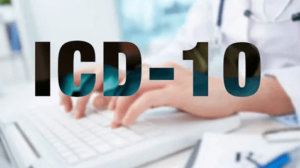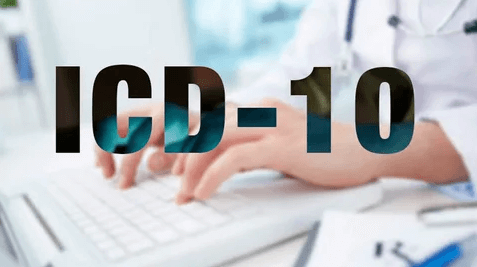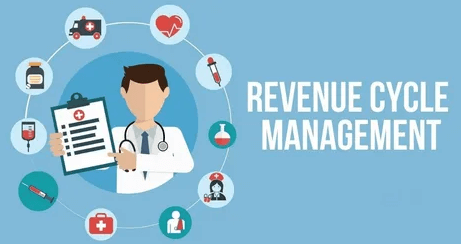Understanding the Impact of ICD-10 Coding on Medical Billing
Introduction to ICD-10 Coding
ICD-10, or the International Classification of Diseases, 10th Edition, is a standardized coding system used in the healthcare industry to classify and document diseases, conditions, and medical procedures. Introduced globally in 2015, it replaced the older ICD-9 system. ICD-10 offers a more comprehensive and specific coding structure, allowing healthcare providers to describe patient diagnoses and treatments with greater accuracy. It comprises alphanumeric codes, facilitating precise communication among healthcare professionals, insurers, and government agencies. Accurate ICD-10 coding is essential for proper medical billing, insurance claims, and statistical analysis in healthcare. Its adoption has improved data quality, enabled better patient care, and streamlined reimbursement processes.
Classification of Diseases, 10th Edition, is a standardized coding system used in the healthcare industry to classify and document diseases, conditions, and medical procedures. Introduced globally in 2015, it replaced the older ICD-9 system. ICD-10 offers a more comprehensive and specific coding structure, allowing healthcare providers to describe patient diagnoses and treatments with greater accuracy. It comprises alphanumeric codes, facilitating precise communication among healthcare professionals, insurers, and government agencies. Accurate ICD-10 coding is essential for proper medical billing, insurance claims, and statistical analysis in healthcare. Its adoption has improved data quality, enabled better patient care, and streamlined reimbursement processes.
This blog provides insights and information to assist you in understanding the nuances and importance of ICD-10 coding in the healthcare industry.
Transition from ICD-9 to ICD-10: Key Changes and Challenges
The shift from ICD-9 to ICD-10 was a monumental milestone in the healthcare industry. It brought about significant changes and presented various challenges that healthcare providers, payers, and professionals had to navigate. Here, we delve into this transition’s fundamental changes and challenges.
Increased Specificity and Detail:
One of the most noticeable changes was the level of detail and specificity in coding. ICD-10 introduced a vast expansion of codes, allowing for more precise descriptions of diagnoses and procedures. While this offers better clinical documentation and patient care, it also necessitates thorough training for healthcare professionals to choose the appropriate code.
Learning Curve and Training Requirements:
The transition demanded extensive training for healthcare staff. Coders, clinicians, and administrative personnel needed to grasp the intricacies of the new system. Training programs were essential to ensure accurate coding, as errors could lead to claim denials, delayed payments, or compliance issues.
Impact on Revenue Cycle Management:
Implementing ICD-10 had a direct impact on revenue cycle management. Healthcare organizations had to adapt their billing and coding processes, temporarily slowing down workflows. Proper preparation and testing were crucial to minimizing disruptions in cash flow.
Coding Documentation and Compliance:
ICD-10’s detailed coding system required thorough documentation of patient encounters. Physicians needed to capture more specific clinical details to support the chosen codes. Compliance with these documentation standards was essential to avoid audit risks and potential legal issues.
Improved Specificity and Accuracy in Diagnosis Coding
The transition from ICD-9 to ICD-10 heralded a significant leap in specificity and accuracy in diagnosis coding within the healthcare industry. ICD-10’s expanded code set allowed for a more granular and detailed representation of patient conditions, enabling healthcare providers to document and communicate complex diagnoses precisely. This newfound specificity has several key advantages.
to ICD-10 heralded a significant leap in specificity and accuracy in diagnosis coding within the healthcare industry. ICD-10’s expanded code set allowed for a more granular and detailed representation of patient conditions, enabling healthcare providers to document and communicate complex diagnoses precisely. This newfound specificity has several key advantages.
Firstly, it facilitates better clinical decision-making. Physicians can pinpoint a patient’s condition’s exact nature and severity, leading to more tailored treatment plans and improved patient outcomes.
Secondly, the enhanced coding accuracy translates into improved reimbursement processes. Payers can better understand the medical necessity of procedures and treatments, reducing claim denials and billing disputes.
Moreover, detailed coding supports robust epidemiological and public health research. Health authorities and researchers can gain deeper insights into disease trends, enabling more effective public health interventions.
Impact on Reimbursement and Revenue Cycle Management
The transition to ICD-10 profoundly impacted reimbursement and revenue cycle management in healthcare. With the increased specificity and detail in coding, accurate documentation became paramount for healthcare providers. Proper coding ensured that insurers could assess claims more precisely, reducing denials and payment delays. However, this transition initially disrupted revenue cycles, necessitating adjustments to billing processes and staff training. Healthcare organizations that successfully adapted to ICD-10 coding experienced improved revenue capture and enhanced financial performance. In essence, ICD-10’s impact on reimbursement and revenue cycle management emphasized the importance of precise coding and efficient billing practices in sustaining the financial health of healthcare providers.
Training and Education for Healthcare Professionals
Training and education for healthcare professionals during the ICD-10 transition were essential, encompassing curriculum development, interactive workshops, online learning, ongoing updates, and certification for proficiency and compliance.
Comprehensive Curriculum Development:
Transitioning to ICD-10 required healthcare organizations to develop comprehensive training curricula. These programs encompassed various aspects of ICD-10 coding, including code specificity, documentation requirements, and compliance. Training materials were tailored to different healthcare roles, such as coders, physicians, and administrative staff.
Interactive Workshops and Seminars:
Interactive workshops and seminars were crucial components of ICD-10 education. These sessions allowed healthcare professionals to engage with the new coding system actively. Hands-on exercises, case studies, and coding simulations helped staff become familiar with ICD-10’s intricacies.
Online Learning Platforms:
Many healthcare organizations utilize online learning platforms to deliver ICD-10 training. These platforms offered flexibility for busy professionals and allowed for self-paced learning. They often included quizzes and assessments to ensure comprehension.
Ongoing Education and Updates:
ICD-10 was not a one-time learning event; it required ongoing education and updates. Healthcare professionals need to stay current with coding changes and best practices. Continuing education and refresher courses helped staff maintain their coding proficiency.
Assessment and Certification:
To validate proficiency, many professionals pursued ICD-10 certification. This involved passing rigorous examinations that tested their knowledge of ICD-10 coding guidelines and principles. Certification enhanced professional credentials and demonstrated a commitment to accuracy and compliance.
Compliance and Documentation Requirements
Compliance and documentation requirements underwent significant changes with the transition to ICD-10. The increased specificity in coding demanded precise clinical documentation to support chosen codes. Healthcare providers must ensure that their records accurately reflect the patient’s condition, diagnosis, and treatment. Failure to meet these leads to compliance issues claim denials, or legal repercussions. Moreover, ICD-10 mandated adherence to new coding guidelines, necessitating staff training to ensure compliance. Embracing these requirements was critical not only for successful billing and reimbursement, but also for maintaining the quality of patient care and aligning healthcare practices with regulatory standards.
Technology and Software Solutions for ICD-10 Coding in Medical Billing
Technology and software solutions were pivotal in the ICD-10 transition for medical billing. Advanced coding software systems were adopted to streamline the coding process, ensuring accuracy and efficiency. These tools featured built-in code lookup and validation, aiding coders in selecting the correct codes. Additionally, electronic health record (EHR) systems were updated to accommodate ICD-10 coding, facilitating seamless integration of coding and documentation. Such technology enhancements improved coding accuracy and helped healthcare organizations adapt to the increased code specificity, ultimately enhancing the overall effectiveness of medical billing processes in the ICD-10 era.
Concluding Remarks
In conclusion, the transition from ICD-9 to ICD-10 profoundly impacted medical billing. It brought about increased specificity, necessitated extensive training, and demanded compliance with detailed documentation requirements. Successful adaptation to ICD-10 coding required healthcare organizations to invest in technology solutions, adjust revenue cycle management practices and prioritize accurate coding. Ultimately, these changes aimed to improve the accuracy of billing, support better patient care, and enhance the financial stability of healthcare providers in an evolving healthcare landscape.








